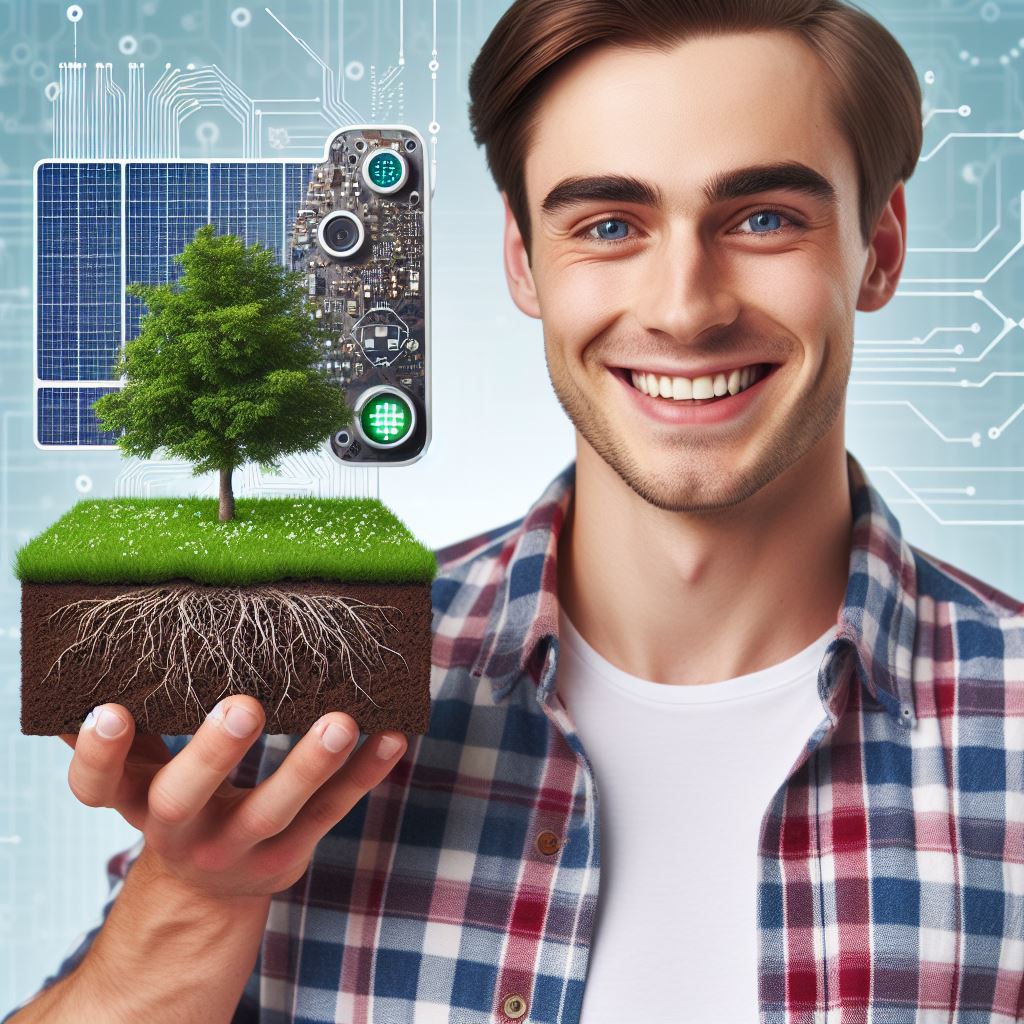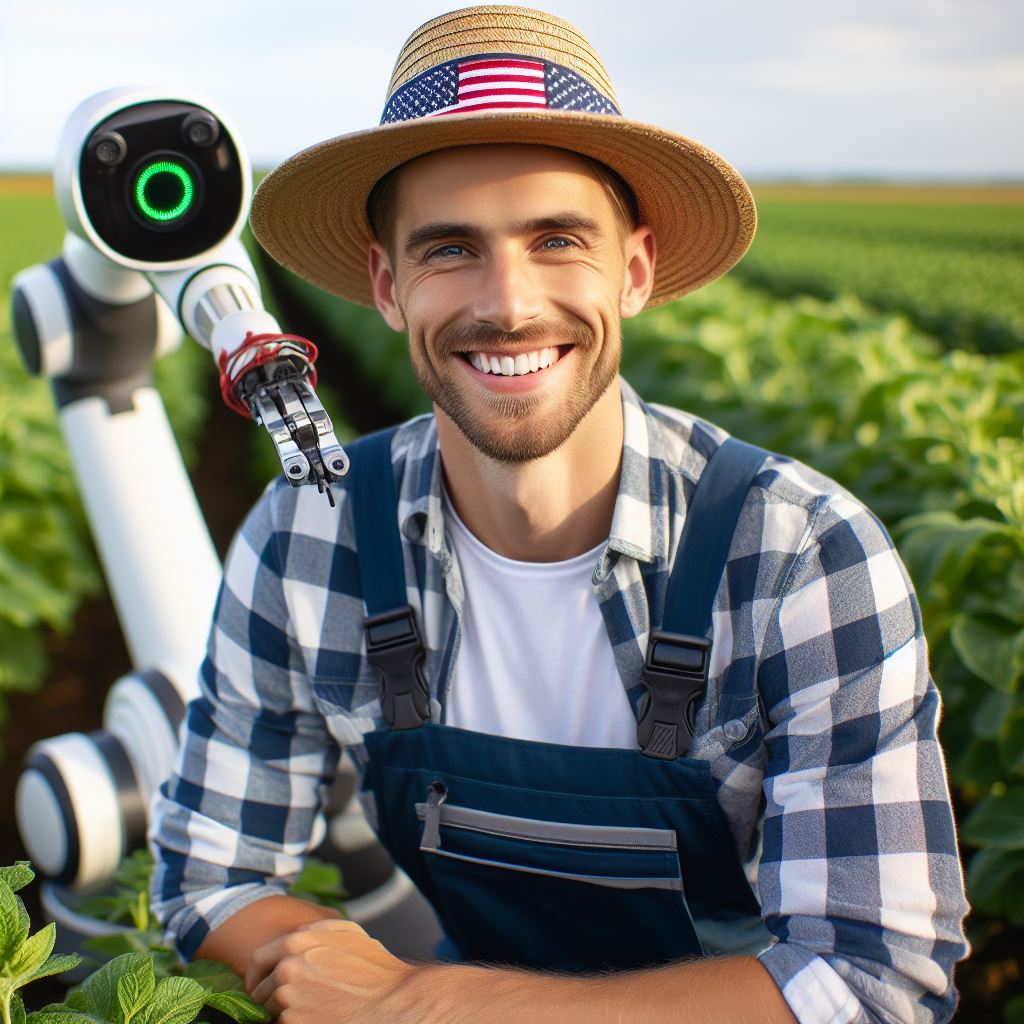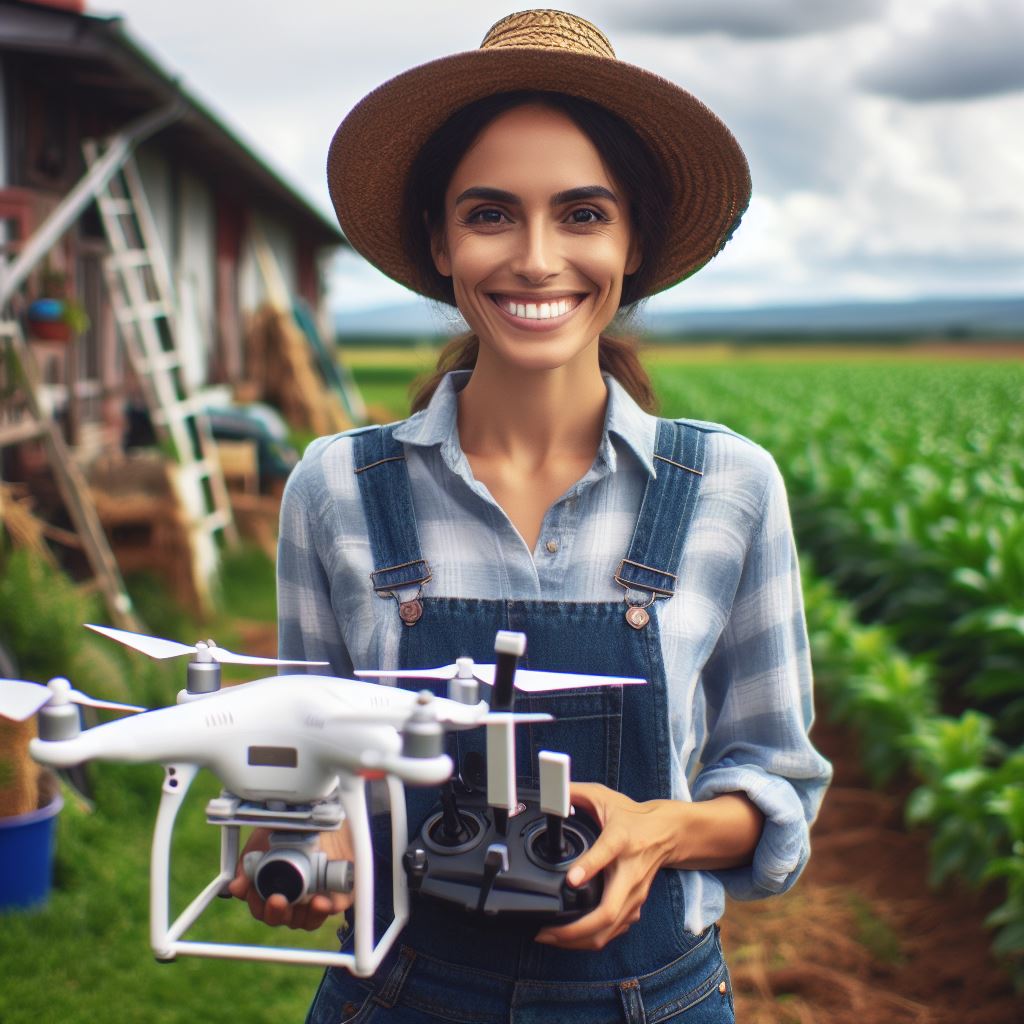Introduction
Soil health is crucial for agriculture, impacting crop yield, environmental sustainability, and food security worldwide.
Farmers are increasingly turning to AI and sensor technologies to monitor and improve soil health.
These innovative tools offer real-time data on soil moisture, nutrient levels, and microbial activity, allowing for more precise and efficient soil management practices.
By harnessing the power of AI and sensors, farmers can optimize fertilizer application, reduce water usage, prevent soil erosion, and mitigate the impacts of climate change on soil health.
Moreover, these technologies enable proactive decision-making, helping farmers identify potential issues before they escalate into larger problems.
As the demand for sustainable farming practices continues to grow, the integration of AI and sensor technologies into soil health management represents a promising solution for enhancing agricultural productivity while minimizing environmental impact.
In this blog section, we will explore the role of AI and sensors in revolutionizing soil health management and the potential benefits for farmers and the planet.
Understanding Soil Health
Soil health is a comprehensive term that encompasses various components such as structure, fertility, and biodiversity.
It refers to the overall condition of the soil and its ability to support plant growth and ecosystem functions.
When we talk about soil health, we are essentially referring to its physical, chemical, and biological properties.
These properties determine the soil’s capacity to perform essential functions like nutrient cycling, water filtration, and carbon sequestration.
The structure of the soil, which refers to the arrangement of particles and the pore space between them, plays a crucial role in determining its health.
A well-structured soil allows for proper water infiltration, root development, and gas exchange.
Fertility is another vital component of soil health. It is the ability of the soil to provide essential nutrients that plants need for growth.
A fertile soil contains adequate levels of macronutrients (nitrogen, phosphorus, and potassium) and micronutrients (iron, zinc, and manganese).
Biodiversity within the soil is equally important for its health.
A diverse range of organisms, such as earthworms, bacteria, fungi, and nematodes, contribute to nutrient cycling, organic matter decomposition, and disease suppression.
The presence of a rich soil microbiome indicates good soil health.
Several factors can affect soil health, and it is crucial to understand and manage them for sustainable agricultural practices.
Climate plays a significant role, as extreme weather events like droughts and floods can degrade soil quality and lead to erosion.
Land practices also have a considerable impact on soil health.
Unsustainable techniques such as excessive tillage, overuse of chemical fertilizers, and improper crop rotation can disrupt the soil ecosystem and deplete its nutrients.
The need for monitoring and improving soil health
It is important to recognize the need for monitoring and improving soil health to ensure sustainable agricultural production. Regular monitoring helps identify soil degradation and allows farmers to take necessary actions for remediation.
Advancements in AI and sensor technologies are revolutionizing soil health monitoring.
Sensors can collect data on soil moisture, temperature, nutrient levels, and even microbial activity.
AI algorithms can analyze this data and provide valuable insights for making informed decisions regarding soil management.
By monitoring soil health, farmers can optimize their agricultural practices, reduce input costs, and minimize environmental impacts.
They can tailor irrigation schedules, nutrient applications, and tillage practices based on real-time data, leading to improved crop yields and long-term soil sustainability.
In fact, soil health is a complex concept that involves various components and factors.
Understanding and managing soil health is essential for sustainable agriculture and environmental stewardship.
The integration of AI and sensor technologies in soil health monitoring is a promising step towards achieving these objectives.
AI in Soil Health
Soil health monitoring plays a crucial role in sustainable agriculture and environmental conservation.
Traditional methods of soil health assessment are often time-consuming, labor-intensive, and costly.
However, with the advent of artificial intelligence (AI) and sensor technology, there has been a revolution in soil health management.
AI has the potential to greatly enhance soil health monitoring and improve agricultural practices.
One major application of AI in soil health monitoring is through the use of AI algorithms for data analysis and pattern recognition.
These algorithms can efficiently process large amounts of data collected from various sensors and provide real-time analysis and insights.
By analyzing soil, climate, and plant data, AI algorithms can determine patterns and correlations that may not be easily detectable by humans alone.
The benefits of AI in predicting soil health and determining interventions are immense.
AI algorithms can identify soil health problems at an early stage, allowing for timely interventions to prevent further degradation.
For instance, through the analysis of soil moisture data, AI can predict the risk of drought stress and provide recommendations for irrigation scheduling.
Similarly, AI can analyze nutrient levels in the soil and recommend appropriate fertilizer applications to optimize crop yield while minimizing environmental pollution.
Transform Your Agribusiness
Unlock your farm's potential with expert advice tailored to your needs. Get actionable steps that drive real results.
Get StartedMoreover, AI can also assist in the identification and management of soil-borne diseases and pests.
By analyzing data from sensors monitoring soil temperature, humidity, and other factors, AI algorithms can detect the presence of disease-causing pathogens in the soil.
This early detection enables farmers to take appropriate actions, such as implementing targeted pest control measures, preventing crop losses, and reducing the need for chemical pesticides.
Potential benefits of AI in predicting soil health and determining interventions
The use of AI in soil health monitoring can also lead to improved resource management and increased operational efficiency.
By analyzing historical data and environmental factors, AI algorithms can optimize irrigation and fertilization strategies, reducing water and fertilizer wastage.
This not only benefits farmers economically but also contributes to environmental conservation by minimizing nutrient leaching and reducing the use of water resources.
Furthermore, AI-powered soil health monitoring can provide valuable insights for precision agriculture.
By integrating data from satellite imagery, weather stations, and soil sensors, AI algorithms can generate detailed soil maps and prescribe site-specific management practices.
This enables farmers to tailor their cultivation practices to the specific needs of different soil areas, optimizing productivity and reducing the overall environmental impact of agriculture.
In summary, AI has revolutionized soil health monitoring by facilitating data analysis, pattern recognition, and predictive modeling.
The use of AI algorithms in soil health assessment allows for timely interventions, accurate prediction of soil health problems, and optimized resource management.
By harnessing the power of AI, farmers and agricultural stakeholders can make informed decisions, ensuring sustainable and resource-efficient agricultural practices.
Sensor Technology in Soil Health
Role of Sensors in Soil Health Monitoring
Sensors play a crucial role in the monitoring of soil health, providing valuable data for analysis.
Various Types of Sensors for Measuring Soil Parameters
- Moisture Sensors: These sensors measure the amount of water content in the soil, helping in efficient irrigation.
- Nutrient Sensors: They assess the levels of essential nutrients in the soil, aiding in proper fertilizer application.
- pH Sensors: By measuring the soil’s acidity or alkalinity, pH sensors ensure optimal conditions for plant growth.
- Organic Matter Sensors: These sensors monitor the amount of organic matter in the soil, indicating its fertility.
- Temperature Sensors: They record the soil temperature, helping farmers understand the impact on plant growth.
Advantages of Sensor Technology in Providing Real-time Data
- Timely Decision-making: Real-time data from sensors enables farmers to make informed decisions promptly.
- Precision Agriculture: Sensor technology allows farmers to optimize resource utilization, reducing waste.
- Improved Productivity: Monitoring soil parameters helps in optimizing nutrient levels, resulting in higher crop yields.
- Water Conservation: By measuring soil moisture, sensors aid in efficient irrigation practices, reducing water wastage.
- Early Detection of Issues: Sensors provide early warning signs of potential soil problems, allowing for timely intervention.
Sensor technology in soil health monitoring has revolutionized farming practices, transforming traditional methods into data-driven and precise approaches.
By understanding the role of sensors and their advantages, farmers can make smarter decisions to achieve sustainable and profitable agriculture.
Read: Irrigation Apps: Tech at Your Fingertips
Integration of AI and Sensors
How AI and sensor technologies can complement each other
The integration of Artificial Intelligence (AI) and sensor technologies has the potential to revolutionize soil health management.
By combining AI algorithms with data collected from sensors, farmers and agricultural experts can gain valuable insights and make data-driven decisions.
Sensors are capable of collecting a wide range of real-time data, such as temperature, moisture levels, nutrient content, and soil quality.
Potential of integrating AI algorithms with sensor data
AI algorithms can analyze this vast amount of data and identify patterns, trends, and anomalies that may not be immediately apparent to humans.
By integrating AI algorithms with sensor data, farmers can optimize their fertilizer usage, water irrigation, and pest control strategies.
The algorithms can process and interpret the data more efficiently, helping farmers make timely adjustments to maximize crop yield and minimize environmental impact.
Benefits of real-time data analysis and feedback for soil health management
One of the major advantages of integrating AI and sensor technologies in soil health management is the ability to analyze data in real-time.
Real-time data analysis enables farmers to monitor soil conditions continuously and detect changes and issues promptly.
Feedback from AI algorithms can provide actionable recommendations, allowing farmers to take immediate corrective measures to maintain optimal soil health.
This real-time feedback loop helps prevent potential crop diseases, nutrient deficiencies, or excesses, resulting in healthier soils and increased crop productivity.
Furthermore, AI-powered soil health management can also help reduce costs and environmental impact.
Farmers can optimize the usage of resources, such as water and fertilizers, based on the real-time data and recommendations provided by AI algorithms.
This leads to more efficient and sustainable farming practices, minimizing waste and preserving natural resources.
In short, the integration of AI and sensor technologies offers immense potential for improving soil health management.
By combining the power of AI algorithms with real-time data collected from sensors, farmers can make data-driven decisions and achieve optimal crop yield.
The benefits of real-time data analysis and feedback enable prompt actions and prevent potential issues, leading to healthier soils and sustainable farming practices.
The integration of AI and sensors is a significant step towards revolutionizing agriculture and ensuring a more productive and environmentally friendly future.
Showcase Your Farming Business
Publish your professional farming services profile on our blog for a one-time fee of $200 and reach a dedicated audience of farmers and agribusiness owners.
Publish Your ProfileRead: Moisture Sensors: Boosting Crop Yields

Case Studies and Success Stories
In recent years, the use of artificial intelligence (AI) and sensor technology has transformed the field of agriculture, specifically in improving soil health.
These technologies have shown great promise in helping farmers optimize their farming practices and ensure sustainable crop production.
Here, we will discuss some case studies and success stories to illustrate the impact of AI and sensor applications in soil health improvement.
One successful project is the utilization of AI and sensor technology in precision irrigation.
By analyzing soil moisture levels and weather data, AI algorithms can determine the optimal amount of water required for crops.
This not only reduces water wastage but also prevents over-irrigation, which can lead to waterlogged soils and decrease soil health.
As a result, farmers have reported significant increases in crop yield and improved soil fertility.
Another example is the implementation of sensors to monitor soil nutrient levels.
These sensors can measure the concentration of essential nutrients such as nitrogen, phosphorus, and potassium in real-time.
AI algorithms then analyze this data and provide farmers with accurate recommendations on fertilization.
By using the right amount of fertilizers at the right time, farmers can minimize nutrient runoff, which not only protects the environment but also enhances soil health and plant growth.
Furthermore, AI and sensor technologies have been instrumental in detecting soil diseases and pests.
Through deep learning algorithms, these technologies can identify early signs of diseases or pest infestations based on changes in soil conditions.
This enables farmers to take timely preventive measures, such as targeted pesticide application or crop rotation, to minimize the spread of diseases and preserve soil health.
Successful projects have shown a significant reduction in crop losses and increased overall farm profitability.
Potential scalability and widespread adoption of these technologies
The scalability and widespread adoption of these technologies have been remarkable.
Thanks to advancements in AI, sensors have become more affordable and easier to deploy across a wide range of farm sizes.
Additionally, user-friendly interfaces and mobile applications have made it accessible to farmers with minimal technical expertise.
As a result, the adoption rate of AI and sensor technology in agriculture has been steadily increasing, leading to a positive impact on soil health and sustainable farming practices.
In essence, the application of AI and sensor technology in soil health improvement has proven to be highly successful.
Through precision irrigation, nutrient monitoring, and disease detection, farmers are able to optimize their farming practices and ensure sustainable crop production.
The scalability and widespread adoption of these technologies have further enhanced their impact, making them invaluable tools in modern agriculture.
As we move forward, continued research and innovation in AI and sensor technology will only further revolutionize the field of soil health management.
Read: 2024’s Top Smart Irrigation Systems Reviewed
Challenges and Limitations
Addressing Potential Challenges and Limitations of Implementing AI and Sensor Technologies
Implementing AI and sensor technologies for soil health assessment and management is not without challenges and limitations.
This section discusses issues such as cost, data quality, and farmer adoption, as well as ongoing research and efforts to overcome these challenges.
1. Cost
- One of the main challenges of implementing AI and sensor technologies in soil health management is the cost involved.
- High-quality sensors and AI algorithms can be expensive, making it difficult for small-scale farmers to afford them.
2. Data Quality
- An important limitation is the quality of data collected by sensors and the accuracy of AI algorithms in interpreting that data.
- Noise, calibration issues, and data integration from different sources can affect data accuracy.
- Ensuring consistent and reliable data collection and analysis is crucial for effective soil health management.
3. Farmer Adoption
- Another challenge is encouraging farmers to adopt AI and sensor technologies for soil health management.
- Resistance to change, lack of awareness, and understanding of the technology can hinder adoption.
- Education and training programs can help address these barriers and promote widespread adoption.
4. Ongoing Research and Efforts
- Despite the challenges, ongoing research and efforts are being made to address the limitations of AI and sensor technologies.
- Researchers are working on developing more cost-effective and user-friendly sensors specifically designed for farmers.
- Improvements in AI algorithms are being researched to enhance data interpretation and improve accuracy.
- Data quality assurance methods are being developed to minimize errors and ensure reliable soil health assessment.
- Extension services and farmer outreach programs are being implemented to educate and familiarize farmers with these technologies.
In review, while AI and sensor technologies bring promising advancements to soil health assessment and management, several challenges and limitations need to be addressed.
The cost of implementing these technologies, ensuring data quality, and promoting farmer adoption are critical issues.
However, ongoing research and efforts are actively working towards overcoming these challenges, with a focus on cost-effective sensors, improved algorithms, data quality assurance, and farmer education programs.
Read: Farming Data: AI’s Analytical Power
Future Trends and Implications
Potential Future Developments in AI and Sensor Technologies for Soil Health
- Enhanced Data Collection: AI and advanced sensor technologies can revolutionize soil health assessment.
- Automated Soil Monitoring: Innovations in AI can lead to real-time soil health monitoring with automated data analysis.
- Precision Agriculture: AI algorithms and sensors can enable precision farming practices by providing accurate soil health information.
- Predictive Analytics: Advanced AI models can predict soil health trends based on historical and real-time data.
- Soil Fertility Management: AI-powered sensors can help optimize fertilizer usage based on soil nutrient content.
- Disease and Pest Detection: AI and sensor technologies can detect soilborne diseases and pests for early prevention.
Implications for Sustainable Agriculture and Environmental Conservation
- Improved Resource Efficiency: AI-driven soil health technologies can optimize resource allocation and minimize waste in agriculture.
- Enhanced Crop Productivity: Accurate soil health information can lead to improved crop productivity and yield.
- Reduced Environmental Impacts: Monitoring soil health can help minimize the use of agrochemicals, reducing soil and water pollution.
- Soil Carbon Sequestration: AI can assist in developing strategies to enhance soil carbon storage and mitigate climate change.
- Biodiversity Conservation: Monitoring soil health ensures the preservation of microbial communities essential for biodiversity.
- Sustainable Land Management: AI-based soil health assessment can guide farmers in adopting sustainable land management practices.
Highlighting the Need for Continued Research and Innovation
- Data Integration: Further research is needed to integrate various data sources effectively for comprehensive soil health assessment.
- Standardization: Developing common protocols and standards will enable comparing data across different AI and sensor technologies.
- User-friendly Interfaces: Efforts should focus on designing user-friendly interfaces to enable easy adoption by farmers and stakeholders.
- Cost Reduction: Continued research can lead to cost-effective AI and sensor solutions, making them accessible to small-scale farmers.
- Long-term Monitoring: Long-term studies are essential to understand the dynamic nature of soil health and its response to management practices.
- Collaboration and Knowledge Sharing: Encouraging collaboration between researchers, farmers, and policymakers will accelerate innovation and adoption.
In a nutshell, the future holds great promise for AI and sensor technologies in soil health assessment.
These technologies can revolutionize sustainable agriculture, enhance resource efficiency, and mitigate environmental impacts.
However, continued research, innovation, and collaboration are crucial to maximizing the potential of AI and sensors for soil health monitoring and management.
Only through these efforts can we ensure a resilient agricultural system that sustains both the environment and future generations.
Conclusion
We have explored the fascinating world of soil health and how AI and sensor technologies are revolutionizing it.
By analyzing data from sensors embedded in the soil, AI can provide valuable insights into soil health, such as nutrient levels and moisture content.
We have also discussed the potential benefits of these advancements, including increased crop yields, reduced costs, and minimized environmental impact.
By optimizing farming practices based on real-time data, farmers can make more informed decisions and improve overall soil health.
It is important for us all to recognize the significance of soil health and its impact on agriculture and the environment.
With the help of AI and sensor technologies, we can monitor soil conditions more effectively, detect potential issues early on, and take appropriate measures to maintain soil health.
As technology continues to advance, it is crucial for readers to stay informed about the latest developments in this field.
By keeping up to date with the latest advancements in AI and sensor technologies for soil health, we can contribute to sustainable farming practices and ensure a healthier planet for future generations.
So, let’s embrace the power of AI and sensors and work towards creating a future where soil health is prioritized, and our agricultural practices are more sustainable and efficient.
Together, we can make a significant impact on the health of our soils and the overall well-being of our planet.




